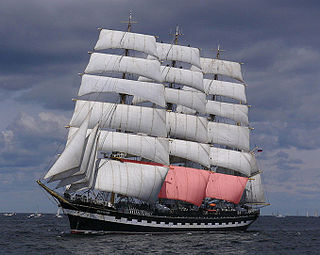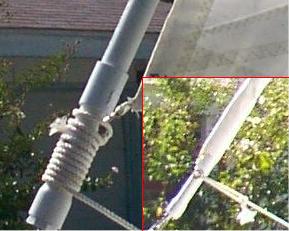Advantages

In the typical Bermuda rig, the sails located in front of the mast generally deliver a higher percentage of the driving force. The stay that supports the leading edge of the sail causes far less turbulence than a mast, resulting in better airflow across the lee side of the sail. To take advantage of this fact, Bermuda rigs are shifting towards larger fore-sails and smaller mainsails. Fore-sails include jibs, genoas and staysails. The cutter, with its use of multiple foresails, achieves the same goal of placing a higher percentage of the sail area in staysails. [2]
By moving the mast toward the back of the sailboat, designers can increase the size and driving power of the more efficient foresails. The mainsail is reduced in size or eliminated altogether. An advantage of using foresails, also called staysails, is that they may be rigged for roller furling. This allows the sail(s) to quickly and easily be deployed and reefed by pulling lines. The sail rolls up around the stay. This simplicity and easy operation is one of the main attractions of the mast-aft rig. [2]
By reducing the mainsail in size or eliminating it altogether, the aft mast rig squarely minimizes or completely solves the problems associated with battens. Battens enable designers to increase the size of mainsails by pushing the mainsail away from the mast. However, the forces of the battens pushing against the mast make it more difficult to raise or lower the mainsail. On larger rigs, "batten cars" are needed to overcome these forces. [3]
By eliminating the battens and associated batten cars, the material cost savings for a typical 60-ft catamaran can be as much as $12,000 AUD. [4] Aft-mast rigs with no mainsail also require fewer winches to raise and lower sails, and no winches to move the boom. When "Hot Buoys" converted from a Bermuda rig to an aft-mast rig 5 winches were no longer required.
For rigs with no mainsail, there is also no boom. This saves the cost of the boom, and hardware and lines associated with the boom. More importantly, eliminating the boom is a matter of safety. The second leading cause of death on sailboats is the boom. [5] Booms cause injuries and deaths directly and indirectly by knocking people overboard. Even when stationary, booms represent a hazard. According to a German study, "boom strikes were the most common cause of sailing injury overall". [6] Another aspect of safety is in regards to the elimination of the lines and hardware to control the boom. With fewer lines and less hardware on the deck there are fewer items to trip over or trap fingers and hands.













